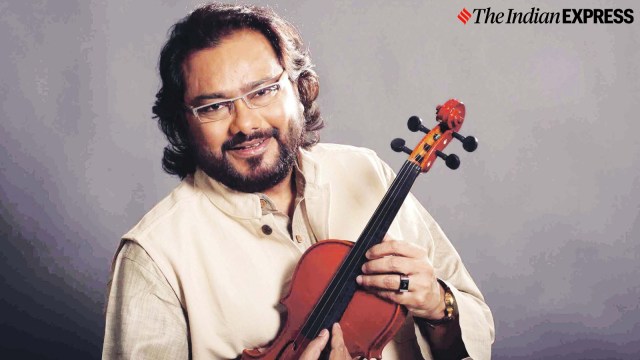📣 For more lifestyle news, click here to join our WhatsApp Channel and also follow us on Instagram
‘She ties my shoelaces’: Music director Ismail Darbar reveals how he moved on after separation from his first marriage with Farzana; expert on being emotionally ready
He also spoke about Ayesha’s decision to convert to Islam “of her own free will” and praised her for giving up her career to support their family.
 Music director Ismail Darbar on his relationships. (Source: Express archive photo)
Music director Ismail Darbar on his relationships. (Source: Express archive photo)When relationships end and new ones begin, questions about timing, emotions, and emotional overlap naturally arise. Composer Ismail Darbar’s recent candid reflections on his personal life have reignited conversations about what it means to move on after a difficult marriage.
Speaking to Vickey Lalwani, Ismail shared that his relationship with his second wife, Ayesha, began only after he and his first wife, Farzana, had already separated. “One day, after we had had an argument, I called Ayesha and we went for a drive. After an hour, I stopped the car and asked her to marry me. She said yes. To be very frank, I started developing feelings for her. I had no idea at the time that she was engaged to a wealthy man. She had a bright future ahead of her. She would hang on to my every word; she thought I was a great music director. She became too attached to me after these heart-to-heart conversations,” he said, adding that the split from Farzana stemmed from incompatibility rather than conflict.
He also spoke about Ayesha’s decision to convert to Islam “of her own free will” and praised her for giving up her career to support their family. “She dresses me even today, she ties my shoelaces. She left her glamour career behind for our children,” Ismail said.
So, when someone enters a new relationship soon after a separation, how can they tell whether they are emotionally ready?
Psychologist Rasshi Gurnani tells indianexpress.com, “Entering a new relationship soon after a separation often brings emotional overlap, making it difficult to distinguish between a genuine connection and an attempt to fill a void. An emotionally ready person usually shows signs of acceptance and closure from the past—they can reflect on the previous relationship without anger or longing, and their sense of self remains stable even without a partner.”
On the other hand, she adds, when someone seeks comfort or distraction, they may idealise the new partner, rush emotional intimacy, or depend on the relationship to soothe unresolved pain. A useful indicator is emotional regulation—if one can tolerate solitude and manage feelings without seeking immediate reassurance, it suggests readiness for a healthy bond.
View this post on Instagram
Healthy ways for both individuals to navigate the emotional balance between love, gratitude, and personal autonomy
When a new partner makes significant life changes, it’s essential to maintain a sense of self while nurturing the relationship. Healthy emotional balance involves mutual respect for autonomy and the understanding that love should not demand the loss of identity.
“Psychological maturity in relationships comes from differentiation — the ability to stay emotionally connected without merging identities. Partners should communicate openly about the motivations behind such changes, ensuring they stem from personal conviction rather than pressure to please or belong. Gratitude can coexist with boundaries when both individuals acknowledge each other’s sacrifices while preserving personal growth and authenticity,” remarks Gurnani.
Adapting to new dynamics in blended households
In blended families, children often experience loyalty conflicts and emotional confusion as they adjust to new parental figures. The key lies in creating psychological safety, allowing them to express their feelings without judgment or expectation of taking sides.
“Consistency, transparency, and cooperative co-parenting help children internalise stability amid change. Step-parents should enter the dynamic gradually, building trust through shared experiences rather than authority. Parents, meanwhile, must maintain open communication, ensuring that affection and attention toward the child remain constant. Over time, empathy, patience, and validation of each member’s emotions can foster respect and connection, allowing the new family structure to evolve naturally and securely,” concludes Gurnani.
📣 For more lifestyle news, click here to join our WhatsApp Channel and also follow us on Instagram
- 01
- 02
- 03
- 04
- 05



























